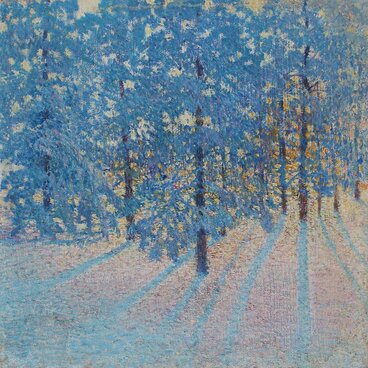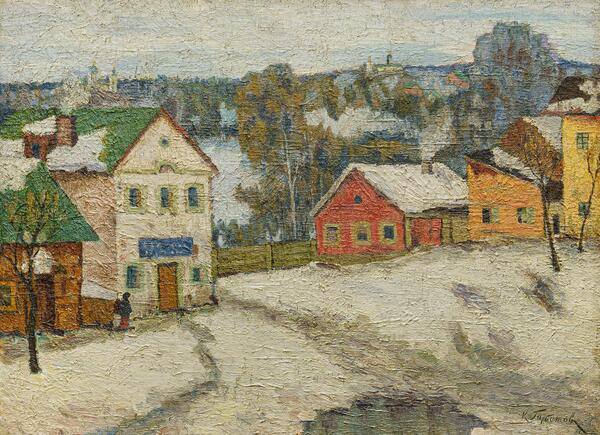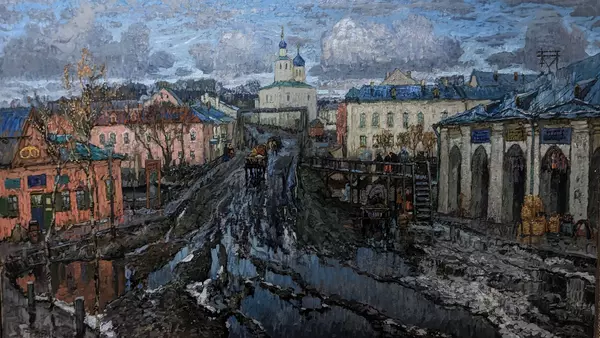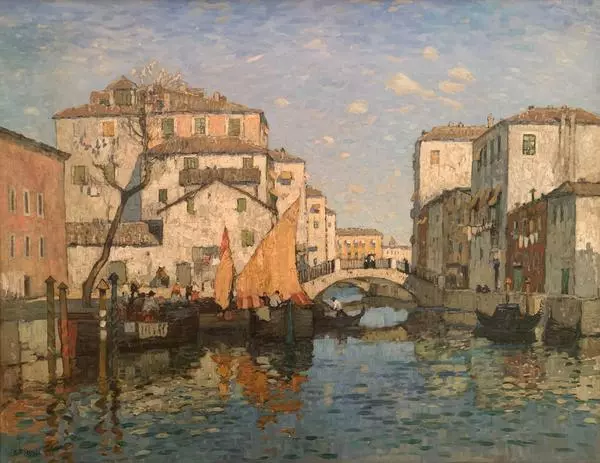The exhibition of the Sevastopol Art Museum named after Mikhail Pavlovich Kroshitsky features an observation landscape by the remarkable Russian artist Konstantin Ivanovich Gorbatov.
He painted this picture a year before graduating from the Academy. Something disturbed, shaky, and mobile appeared in nature and in all the usual appearance of St. Petersburg. Silhouettes of people, trees, residential buildings, and monuments of the past — all appeared shrouded in shimmering air and dusk light. The city immediately ceased to be mundane and acquired “preciousness” due to the complex nuanced coloring, dynamic, seemingly careless but in fact precise colorful strokes, confident, free drawing. The artist captures the state of twilight with elegiac sensitivity. The painting captivates with its lyricism, richness, and variety of color tones. It harmoniously combined Levitan’s traditions and new pictorial techniques characteristic of the painter’s subsequent works.
The talented artist Konstantin Ivanovich Gorbatov received an excellent education at the St. Petersburg Academy of Arts where he initially studied at the architectural department. Later, he was transferred to the landscape class where he was taught by Nikolay Nikanorovich Dubovskoy and Alexander Alexandrovich Kiselyov. After graduation, he continued his education during a state-funded trip to Italy, studied the work of the great European masters in famous museums, and painted “portraits” of legendary monuments. However, having returned to Russia, Gorbatov very soon identified the main theme of his works — he was attracted by the architectural landscape, the ensembles of Old Russian cities and their “peculiar face”. Of course, the choice was determined by the artist’s thorough knowledge of architecture, his admiration for its beauty and grandeur, and a sound command of drawing.
At the turn of the 20th century, following Isaac Levitan, many Russian painters were interested in the “eternal fluidity”, the changeability of nature, its movement from one season to another, and the complex transition from day to night. One of the artists who felt engaged by the subject was Konstantin Gorbatov, whose name was undeservedly forgotten in Russia for a long time but is now returning to the viewer.








